To make a docking of two linoleum paintings invisible and durable is used ...
|
|
Powder painting doors is a technological process, as a result of which ... |
Each developer is faced with the question of the exterior decoration of the building. The cladding at the same time ... |
Than to tamp the sand for tiles
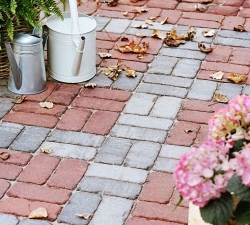
In the process of laying paving slabs, a very important aspect is sand tamping. A properly prepared base for tiles is the key to its long -term operation. We will consider about the methods of raming sand for tiles and about what sand they put the paving slabs on.
Table of contents:
- Paving slabs: scope and virtues of material
- Is it possible to put paving slabs on the sand: Methods of laying the material
- Which sand is better for laying paving slabs
- Than to trample the sand for tiles: features of the installation of sand under the tile is paving slabs
Paving slabs: scope and virtues of material
The wide spread of paving slabs is explained by the practicality and durability of its use. This material, subject to the technology of its installation, will last you for more than one decade.
In addition, paving slabs are also used in public construction. It finish the tracks in parks and squares, sites in front of schools, hospitals, supermarkets. Tile coating is ten times stronger than a concrete or asphalt coating.
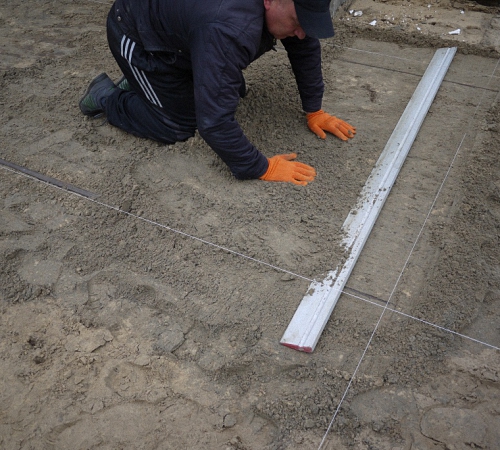
There are several options for paving slabs, depending on the method of its production. The first and most common type of tile is a coating made using a vibropress installation. The production process consists in the preparation of a concrete solution, its installation in special forms that determine its size and thickness.
Next, the process of pressing the solution begins directly, during which air bubbles are removed from the mixture and it acquires the desired strength. Upon completion of pressing, the tile is placed in the thermal stove and is drying.
Then it is cut into the necessary forms and prepared for sale. It is possible to make tiles with your own hands using a vibration press. In this case, the last drying process in the thermal stove is not performed. The material dries outdoors. If the tile is painted in the required color, then the dye is added directly at the time of preparation of the solution. Such tiles have a surface with small roughnesses.
The second type of tile is made by vibrating. This material is more attractive aesthetically, due to the smoothness of the surface, for its manufacture, in addition to the concrete solution, various kinds of additives are used that increase the plasticity of the solution and its operational properties.
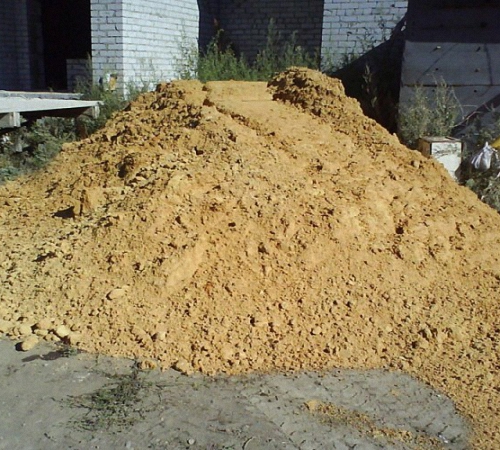
In addition, in the ratio with the composition of the tiles for sidewalks, it happens:
- concrete - for the production of which a solution of water, sand and cement is used;
- Stone - extracted from stones, such as sandstone, granite, etc.
In turn, in the ratio with the processing method, the tile is stab and cut. The first option is cheaper, but less practical in operation. It is difficult to walk on such tiles and is dangerous to drive vehicles. The cut tiles have even edges and is easily installed, forming an even coating.
Among the advantages of the use of paving slabs as a finishing material, we note:
1. Good operational properties - such tiles, with proper care, regular pouring sand into the gaps between the tiles, will last you several decades.
2. The possibility of partial dismantling or replacing the damaged material. If necessary, in the performance of work on laying communications, the tile is easily removed and installed back. If you need to replace several tiles, then it is quite simple to do it.
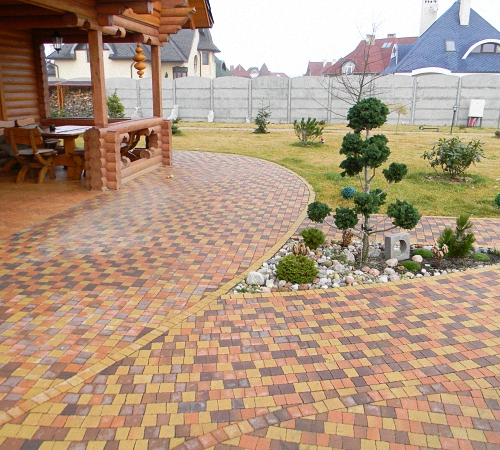
3. Resistance to negative environmental factors. Porcelain tile is resistant to a change in temperature, moisture, sun, wind, etc. It is established in various climatic regions, regardless of the severity of their winters.
4. Easy installation of the material is quite realistic to perform even a beginner. The main rule of qualitatively installation of tiles is the correct preparation of the base for its laying.
5. Aesthetic attractiveness of appearance. In the modern construction market, you can purchase a different in shape, color and texture paving slabs, which will become a real decoration of your site.
6. The ability to make tiles with your own hands significantly reduces its cost. Having a vibration press on the site, you have the opportunity to make tiles at home.
The only disadvantage of paving slabs is too high cost, which pays off during its use.
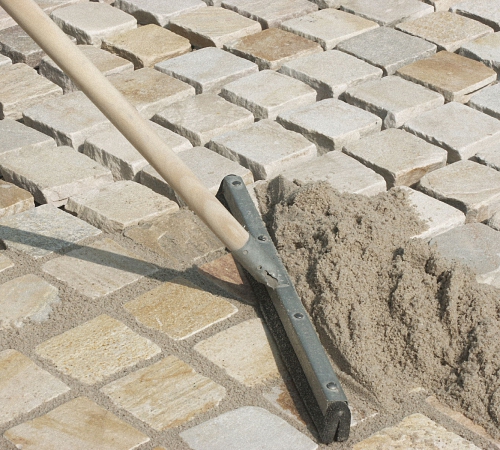
Is it possible to put paving slabs on the sand: Methods of laying the material
Porcelain tile is laid on the base in several ways. The relevance of the use of one or another version of the installation of the material is determined by the operational load on the tile, as well as its thickness.
If the tile is under the regular exposure of cars or other vehicles, it is recommended to resort to a better way of laying it, which involves fixing the tiles on concrete solution.
In this case, the tile is securely fixed on the surface and is not able to deform under the influence of a large load. This method of installation of paving slabs is quite expensive, but it is quite justified in conditions with high production load.
The second laying method involves the installation of tiles on the sand. At the same time, the tile deepens a third into the sand base and is fixed in it in this way. A carefully prepared pillow made of sand allows moisture, which enters the tile during the rain, seep into the joints between the tiles and do not remain on the surface.
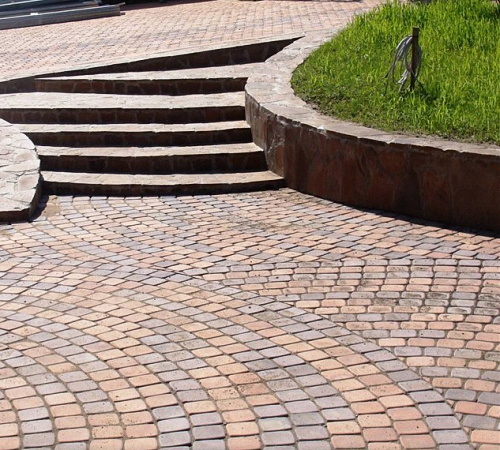
This method is less costly and more popular in private construction. In order for the tile to be held in the sand during use, sand is also poured between the cracks and is well compacted with a brush. Also, it is recommended that you initially install borders along the perimeter of the site, which also perform the function of tile fixers.
In order to reliably fix the tile without resorting to the installation method with concrete solution, cement is added to the sand, in the ratio of three to one. Thus, after the cement is wet, the sand acquires additional strength for fixing the tiles. This installation method is more reliable than laying tiles on a sand base. It is possible to use the option instead of sand with cement, a special dry composition for gluing tiles.
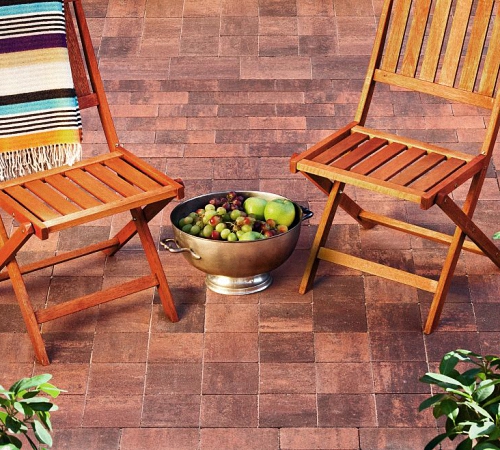
Which sand is better for laying paving slabs
It doesn’t matter what way to lay paving slabs you choose, sand for installation work will be required in any case. Since after cleansing the base of the upper soil layer, you should mandatory a sand pillow, which should be carefully compacted.
For the manufacture of such a pillow, you need to choose high -quality sand. The presence of clay interspersed in the sand will lead to further fusion of the base and deformation of the tiles. Therefore, choosing sand, pay attention to its quality, it should be homogeneous and the same in color.
Clutching the sand in the palm of his hand, it should be easily crumbled, so the material will easily withstand all the load assigned to it. If you squeeze the sand in your hand, and it does not crumble and forms a lump, then you should refuse to buy such material.
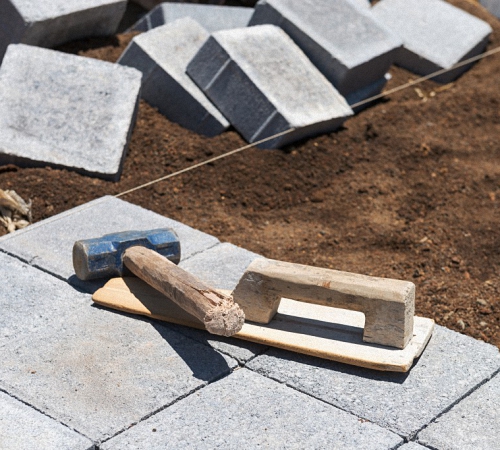
The presence of clay in the sand also leads to the fact that the tile during operation is covered with cracks and loses its attractiveness. The presence of small lumps in the sand is evidence of the wrong storage conditions of the material, such sand should also not be bought.
Choose the material from a reliable manufacturer at an average or high price for your region. You should not save, buying cheap material, since in a few years, you will have to face the negative consequences of this economy.
If you choose the sand, you cannot decide between the two options, then we recommend that you perform the following actions:
- Take a handful of each sand;
- soak sand with water;
- Water should be salty and alkaline;
- blind a ball from it;
- Wait for him to dry.
The drift time of the ball determines the quality and operational characteristics of the material. We recommend that you stop the sand, which has dry faster. Thus, you will find out what sand for laying paving slabs will be better.
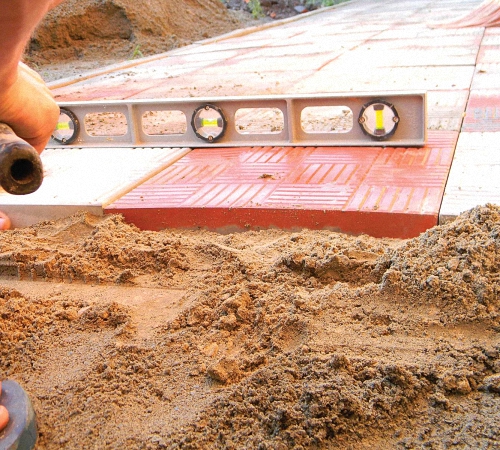
In the response to the question of what sand is used to lay paving slabs, it is difficult to decide on the type of sand. There are two main sand options:
- Sand of career origin;
- river sand.
Choosing between these two options, we will get acquainted with the characteristics of each.
The career version of the sand in any case is distinguished by the presence of a small amount of clay or soil. Therefore, it is best to refuse it. There will be no such additives in the river or sea sand, due to the fact that the water washed them out. Since the sea sand is under the influence of moisture, the grains of sand in it become smoother. Such sand has lower adhesive characteristics.
In some cases, its artificial version is used as career sand, which is made by grinding stone rocks. This sand is not recommended for use in the process of laying paving slabs.
Therefore, in the answer to the question of which sand it is better to lay paving slabs, we recommend that you still dwell on its career version. Since this material is distinguished by the presence of a denser structure, creates a dense base and is not subjected to shrinkage. The river version of the sand nevertheless gives a shrinkage, which during the operation of the tiles negatively affects the evenness of the resulting base.
If the question is about what to make paving slabs from, then for these purposes, both river and career options for sand are suitable. However, using career sand, it is necessary to rinse and sift it thoroughly. Only after its complete getting rid of extraneous impurities, does it include in the work.
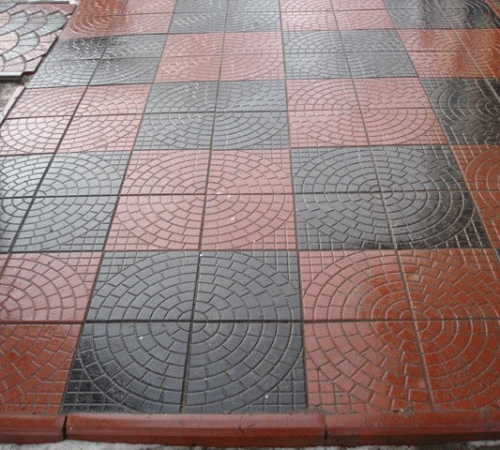
Than to trample the sand for tiles: features of the installation of sand under the tile is paving slabs
Sanding of sand in the process of laying paving slabs is needed in order to get a dense layer not subjected to shrinkage, fusion and compression, which will become a reliable support for taking the load from the tile.
Carefully compacted sand is not subject to processes as compression or stretching. In addition, the sand pillow prevents moisture from under the lower layers of soil to the tile. In order to achieve thoroughly, you need to fill it on the base in small portions, which are constantly moistened with water.
In addition, work should be started with the purification of the soil from its fertile layer. Next is a thorough tamping of the soil itself using a special rink or manual tool. Only after this begins the arrangement of a sand pillow, every 3 cm of which is very thoroughly trim. To check the density of the ramers, you should put on boots and walk along the sand, the absence of traces indicates the quality performance of the work.
A hand tool or a special vibrator is used for ramps with sand. Using the vibration slab allows you to significantly accelerate this process. However, in the absence of a sand tamping tool on your site, just take a regular beam and attach pens to it. Using such a tool, it is possible to carefully compact the sand for the tile, although this process lasts a little longer in time.
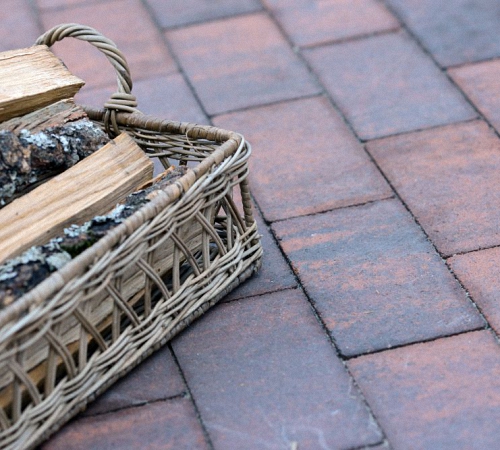
The sand is laid on the base in layers of 20-30 mm, and the next layer is poured only after a thorough and complete compact of the previous one. Using the construction level, control the horizontal filling. We recommend equipping a sand pillow using large fractional sand, which is perfectly opposed before compression.
Next, it is recommended to put out materials based on geotextiles and put a pillow of gravel on them. The thickness of the layer of such a pillow is about 150 mm. After that, the base is again covered with sand and carefully compacted. Next, the tiles are laid. The tile should be plunged into the sand by a third to control the correctness of its location, use rubber kiyanka. After laying each row of tiles, check horizontal using the level.
Installation of sides and stock system for water is carried out before laying the tile on the sand. Fixation of these elements is ensured by laying them on concrete solution. Lay the tile in the direction of yourself. At the end of the installation work, all the cracks between the tiles are filled with sand. Next, the surface is poured with water and waiting for three days. After that, the tile is ready for operation.
